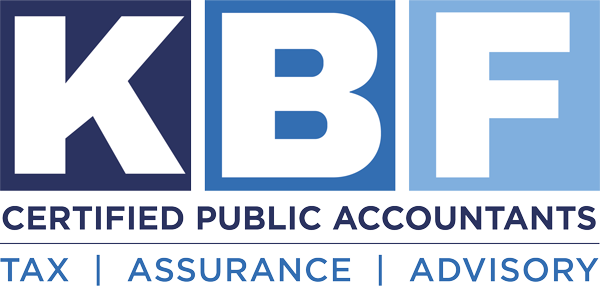Proposed Reliance Regulations on Disallowed Transportation and Commuting Expenses

Background
As amended by the Tax Cuts and Jobs Act (TCJA), Internal Revenue Code (“IRC”) Section (“Sec.”) 274(a)(4) disallows deductions for the expense of any qualified transportation fringe (QTF) as defined in IRC Sec. 132(f) provided to an employee of the taxpayer for amounts paid or incurred after December 31, 2017. The value of a qualified transportation fringe benefit provided by an employer to an employee is excluded from the employee’s income, subject to monthly limits. Under pre-TCJA law, a deduction was not barred for the expenses of providing qualified transportation fringe benefits or other transportation or commuting benefits to an employee.
Although the TCJA denies the employer a deduction for the qualified transportation fringe benefit, it does not change the employee’s exclusion of the benefit from income under IRC Sec. 132, except in the case of qualified bicycle commuting reimbursements.
QTF Treatment
Employees are allowed to exclude, from their gross income, up to $270 per month as a QTF benefit pursuant to IRC Sec. 132(f)(2). The monthly limit is adjusted annually for inflation. Amounts paid in excess of $270 per month are considered taxable income to the employees and deductible by the employer. As mentioned previously, amended IRC Sec. 274(a)(4) provides that no deduction is allowed for the expense of any QTF provided to an employee of the taxpayer.
It should be noted that the rules that disallow the deduction for QTF benefits are subject to three important exceptions which include amounts paid by the employer that are includible in the employees taxable income; amounts paid for goods, services, and facilities made available by the taxpayer to the general public; and finally, amounts paid for goods or services (including the use of facilities) that are sold by the employer in a bona fide transaction for an adequate and full consideration in money or money’s worth.
Guidance
Notice 2018-99
Notice 2018-99 provided interim guidance for taxpayers to determine the amount of parking expenses for qualified QTFs that is nondeductible under IRC Sec. 274(a)(4). That Notice had a four-step method for making that determination where the taxpayer owned or leased the parking facilities. Those four steps are summarized as:
Step 1. Calculate the disallowance for reserved employee spots.
Step 2. Determine the primary use of remaining spots (the “primary use test”).
Step 3. Calculate the allowance for reserved nonemployee spots.
Step 4. Determine remaining use and allocable expenses.
Proposed Regulations
The IRS recently released proposed regulations (REG-119307-19) clarifying how to determine the amount of QTF expenses that are nondeductible. Until final regulations are issued, taxpayers may rely on the proposed regulations or the guidance in Notice 2018-99. The proposed regulations would create Regulation (“Reg.”) Sec. 1.274-13 which addresses QTF parking expenses paid or incurred by an employer (along with certain exceptions in IRC Sec. 274(e)) and Reg. Sec. 1.274-14 to address expenses incurred to provide any transportation, or any payment or reimbursement, to an employee in connection with travel between the employee’s residence and place of employment, except as necessary for ensuring the safety of the employee.
Parking Guidance (Reg. Sec. 1.274-13)
The proposed regulations delineate between situations where the employer pays a third party for its employee’s QTF and situations where the employer owns or leases the parking facility.
Where Taxpayer Pays a Third Party – The proposed regulations provide that if the taxpayer pays a third party for its employee’s QTF, the IRC Sec. 274(a)(4) disallowance is generally calculated as the taxpayer’s total annual cost of the QTF paid to the third party.
Where the Taxpayer Owns or Leases the Parking Facility – With regard to QTF parking expenses, the proposed regs provide that if the taxpayer owns or leases all or a portion of one or more parking facilities, the Code Sec. 274(a)(4) disallowance may be calculated using a general rule or any one of three simplified methodologies. These methodologies are an annual election that are made on a facility by facility basis.
- General rule
- Qualified Parking Limit Method
- Primary Use Method
- Cost per Space Method
General Rule: The taxpayer can use a reasonable interpretation to calculate its QTF expenses, which is limited in three ways: (1) the expense cannot be calculated based on the value of the employee parking; (2) the taxpayer cannot deduct expenses related to spaces reserved for employees; and (3) the taxpayer cannot improperly apply the exception for qualified parking made available to the public. Regarding the third limitation, the employer cannot treat a parking facility regularly used by employees as available to the general public simply because the general public has access to the parking facility.
Qualified Limit Methodology: The taxpayer can determine the monthly qualified limit disallowance of deductions by multiplying the total number of spaces used by employees during the peak demand period, or the total number of taxpayer’s employees, by the monthly per employee limitation on exclusion ($270 in 2020). This methodology may be used only if the taxpayer includes the value of the qualified transportation fringe in excess of the sum of the amount, if any, paid by the employee for the qualified transportation fringe and the applicable statutory monthly on the taxpayer’s Federal income tax return as originally filed as compensation paid to the employee and as wages to the employee for purposes of withholding under chapter 24 of the Code (relating to collection of Federal income tax at source on wages).
Primary-Use Methodology: The taxpayer may use the primary-use methodology to determine its QTF expense by using the following four-step approach to calculate the disallowance of deductions for each parking facility:
- Step 1. Calculate the disallowance for reserved employee spots.
- Step 2. Determine the primary use of remaining spots (the “primary-use test”).
- Step 3. Calculate the allowance for reserved nonemployee spots.
- Step 4. Determine remaining use and allocable expenses.
Cost Per Space Methodology: The taxpayer can calculate the disallowance of deductions for QTF parking expenses by multiplying the cost-per-space by the total number of available parking spaces used by employees during the peak demand period. The product of that amount is the deduction for total parking expenses that are disallowed. The term peak demand period is defined as the period in a typical business day when the greatest number of the taxpayer’s employees are using parking spaces in the taxpayer’s facility.
Additional Guidance in the Proposed Regulations
Typically, an employer that owns its parking facility will have a variety of expenses associated with the facility that makes it difficult to identify the parking portion of the expenses. If the employer elects to use the primary-use methodology or the cost-per-space methodology, the proposed regulations allow the employer to allocate the “mixed parking expenses” using any reasonable methodology, with a 5% safe harbor. This means that the IRS will not question a taxpayer’s return if it takes a deduction of 5% of the total mixed parking expenses. Mixed parking expenses include any rental agreement expenses, property taxes, interest expense, and expenses for utilities and insurance.
The proposed regulations also broaden the applicability of the aggregation rule for parking spaces in the same geographic location. The aggregation rule allows a taxpayer to combine spaces together that are located in the same geographic region. The proposed regulations would allow taxpayers to apply the aggregation rule when calculating the QTF expenses using the general rule and the cost-per-space methodology.
Expenses for transportation in a commuter highway vehicle or transit pass (Reg. Sec. 1.274-14)
The proposed regulations clarify that, unless the expenses are incurred for the safety of the employee, no deduction is allowed for any expense incurred for providing any transportation, or any payment or reimbursement, to an employee of the taxpayer in connection with travel between the employee’s residence and place of employment. Travel between the employee’s residence and place of employment includes travel that originates at a transportation hub near the employee’s residence or place of employment. For example, an employee who commutes to work by airplane from an airport near the employee’s residence to an airport near the employee’s place of employment is traveling between the residence and place of employment.
Implications
The proposed regulations provide much needed guidance to assist taxpayers in determining the amount expenses related to QTF benefits that are or are not deductible. By making the expense allocations both an annual election and one that is made on a facility by facility basis, the IRS is providing the taxpayers with the flexibility to determine the optimal methodology or methodologies which will result in the least amount of disallowed expenses.
